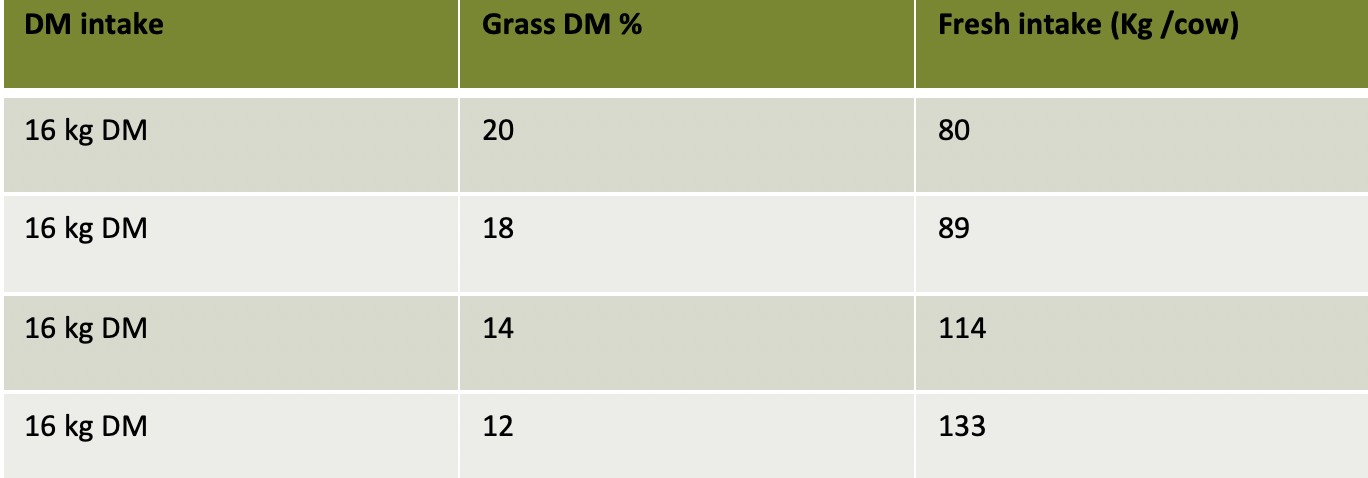Autumn management to optimise milk output
To avoid significant drops in milk production at this time of year, it is important to maintain high dry matter intakes and provide adequate energy for cows to express their potential.
The feed value of autumn grass is often overestimated. Despite autumn grass having a green leafy appearance, the energy content is 80-85 % of the value of Spring grass. The combination of high crude protein of 20-25%, low energy content, high digestibility and low dry matter of grass can have a negative impact on the cow. In order to achieve a similar dry matter intake, the cow needs to increase the fresh intake by up to 40% at lower dry matters.

The high digestibility and low dry matter content of the grass cause a quicker passage through the cow resulting in poor utilisation of the grass. Therefore, the performance response to dry matter intake is high in the autumn. Providing cows with 2-3 kg DM of a high dry matter buffer forage (grass silage, whole crop wheat or maize silage) has numerous advantages. Buffer forages will increase dry matter intakes not achieved from grass alone and also slow the passage of the grass through the cow allowing improved grass utilisation.
Currently, numerous farms are experiencing high milk urea levels exceeding 45 mg/100ml. This excess protein is an expensive energy cost on the cow to get rid of. As a result, the cow will drop in milk yield, loose body condition and in some severe cases loose embryos. Providing a high dry matter silage will lower the total crude protein of the diet, while concentrates will provide the energy to utilise the protein more efficiently. The response to feeding concentrates with adequate autumn grass is typically 1 L of milk for every kg of concentrates fed. This response will slightly increase with a grass shortage and can reach a milk response of up to 1.5 kg of additional milk per kg of concentrates fed for cows with a high milk volume potential. Well managed late lactation cows and cows identified for culling have tremendous potential to produce autumn milk. With a good milk price, it pays to feed.
With the good weather over the last few weeks growth of 50 kg DM/ha and above were achieved and ground conditions have held up resulting in good grazing residuals. According to PastureBase Ireland, farmers grew approximately 180 kg DM/ha more grass in September than in May this year. This should be taken advantage of. Supplementation will reduce the demand on grass allowing farmers to graze cows for longer into late November utilising the cheapest feed available. Maintaining grass within the diet will reduce feed costs and labour, while also benefiting the environment. Extra days at grass reduce the volume of manure generated during housing and thus lower ammonia and greenhouse emissions.
First Published: 11 October 2021
Tagged with: Dairy
